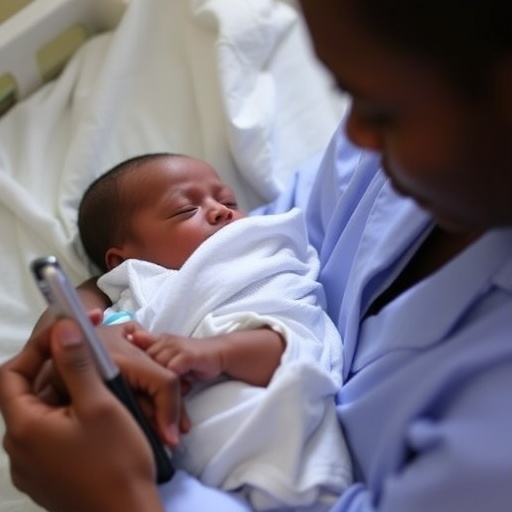
The findings of this study highlight significant quality gaps and reporting inconsistencies, providing essential insights for policymakers to enhance care quality and data accuracy in maternal and child health. Our study found that the prevalence of contact coverage for newborn postnatal care was 34.8% (95% CI: 31.7, 38.0), notably higher than previous studies conducted in Ethiopia (13.2%) [12] and Zambia (16%) [16]. One possible reason could be the recent increase in institutional delivery coverage [16]. Institutional delivery provides an opportunity for pre-discharge health assessments and education on postpartum maternal and newborn care. A study conducted in 15 African countries found that coverage of newborn postnatal checks varies by country, from 13 to 78% [11]. The lower coverage of postnatal checks for newborns and the disparities in coverage between countries may relate to differences in healthcare infrastructure and access to services [17].
This study demonstrates that the newborn postnatal check may not adequately reflect the quality of care received, due to a substantial quality-coverage gap. Effective coverage of newborn postnatal care was only 10.4% (95% CI: 10.2, 10.6), indicating a significant discrepancy between service contact and the quality of care delivered, a gap of 24.4% (95% CI: 21.3, 26.8). Similar findings have been reported in Ethiopia, where effective coverage was estimated at 9% [12]. A multi-country study across 15 African nations also highlighted large disparities between contact and effective coverage, ranging from 26% in Malawi to 89% in Burundi [9, 11]. This gap may be attributed to factors such as inadequate training and a lack of provider commitment to quality care [18].
Multivariable regression analysis revealed that women who attended antenatal care (ANC) and delivered in a health facility were significantly more likely to receive both contact and effective coverage of newborn postnatal care. This finding is consistent with previous studies [19, 20]. The possible reason might be that continuity of care enables them to receive comprehensive education about the importance of postnatal care services. Women who engage with ANC and facility-based delivery are generally more informed and better connected to healthcare systems, which enhances their access to, and utilization of, quality care for themselves and their newborns.
Our study also found that women from city administrative regions were more likely to receive postnatal checkups as well as effective coverage of newborn postnatal care. This finding was supported by previous studies [12, 19]. The possible reason could be that in urban areas there are often more healthcare facilities, better transportation, and infrastructure, making it easier for women to access postnatal care services. Addis Ababa, being the capital city, may have a better-developed healthcare infrastructure and resources, such as well-equipped hospitals, skilled healthcare professionals, and access to essential medical supplies, compared to other regions, contributing to higher-quality newborn care.
In this study, women from middle-income households were more likely to undergo postnatal checks compared to those from poor households. This finding was also supported by previous studies conducted in Ethiopia and low-income countries [12, 21]. The possible explanation could be linked to transportation and other expenses; nevertheless, women from rich households don’t exhibit a noteworthy contrast; it may be that those from middle-income households have better access to healthcare facilities, highlighting that wealth alone doesn’t ensure enhanced healthcare utilization.
This study also showed that women over 25 or older were more likely to have effective coverage of newborn care compared to younger women. The possible explanation might be that older women may have more experience and knowledge about pregnancy, childbirth, and newborn care due to having had previous pregnancies [22]. This experience could contribute to a better understanding of the importance of quality newborn care and the adoption of recommended practices. Moreover, women with secondary or higher education were more likely to have effective coverage of newborn care. This could be attributed to the fact that advanced educational levels are frequently linked with better health-seeking practices, enabling women to access and utilize essential neonatal healthcare [23].
The study also examined the inconsistency between reported postnatal checks and the actual receipt of specific newborn postnatal care interventions. In this study, the prevalence of newborn postnatal checks was 35%. However, 50% of the women reported that healthcare professionals provided at least one specific intervention. Approximately 15% and 13% of women stated that healthcare providers counseled them on breastfeeding and observed breastfeeding, respectively, yet they reported “no” to the question about having a postnatal check. Moreover, 7.3% of women reported having their newborn’s temperature measured, and 6.6% reported receiving counseling on newborn danger signs, yet they reported that they did not have a postnatal check. A previous study similarly found a discrepancy between reported postnatal checks and actual umbilical cord checks received, with this discrepancy ranging from 1% in Burundi to 16% in Malawi [11]. The observed discrepancy might be due to the confusion between intrapartum care and postnatal care. Intrapartum care covers labor, delivery, and placenta expulsion, while postnatal care covers mother and newborn care from the first hour to 6 weeks postpartum [24]. Evidence showed that the percentages of postnatal care coverage drop significantly when first-hour postnatal checks are considered purely intrapartum care [7]. A provider may offer health checks for newborns and mothers multiple times and in various settings such as labor, postnatal, home, and outpatient clinics; however, women might remember individual interventions but not recognize them as part of postnatal care [25]. The lack of agreement on when the postnatal period begins and the need for a clear cutoff for measuring postnatal care continue to be major challenges. Another possible factor contributing to this situation could be the partial fulfilment of the translation of postnatal care aspects. DHS questions are not formally translated into less commonly spoken languages. Instead, interviewers were directed to adjust the question wording to local dialects and cultural nuances without altering the question’s intended meaning [26]. The Ethiopian DHS question has only been translated into three major languages: Amharic, Tigrigna, and Oromiffa, although Ethiopia is home to over 80 different languages [27].
The data for this study come from large, nationally representative surveys and highlight the gap between contact and effective coverage of newborn postnatal care, as well as discrepancies between the reported postnatal check and specific interventions. This information may help policymakers ensure access to all and improve the quality of care. It is also an important finding for the DHS program to evaluate the postnatal care measurement tool. However, this study may face some limitations. Postnatal care for newborns was assessed through self-reports from participants, which could introduce subjective bias. Additionally, several important variables, such as household income, political and economic context, healthcare access, and spousal support, were not included in the analysis, as they are not captured in the primary data collection.
link





